Our visit to the Mariotti travertine workshop allowed the group to see the processing of a popular material. Used in the construction of ancient Roman buildings and modern architectural marvels around the world, travertine is a staple of Italy. While driving through Tivoli towards the travertine site we would be visiting, the bus passed by multiple travertine quarries where large blocks of travertine were being extracted. These large blocks are what travertine finishers like Mariotti use to produce plates, slabs, and tiles. Our tour of the Mariotti travertine workshop was given by Fabrizio Mariotti who is the son of Carlo Mariotti who founded the workshop.
The large blocks come with differing colors and patterns which makes travertine an interesting material for construction due to its lack of uniformity. Stacks of these large blocks are shown below.
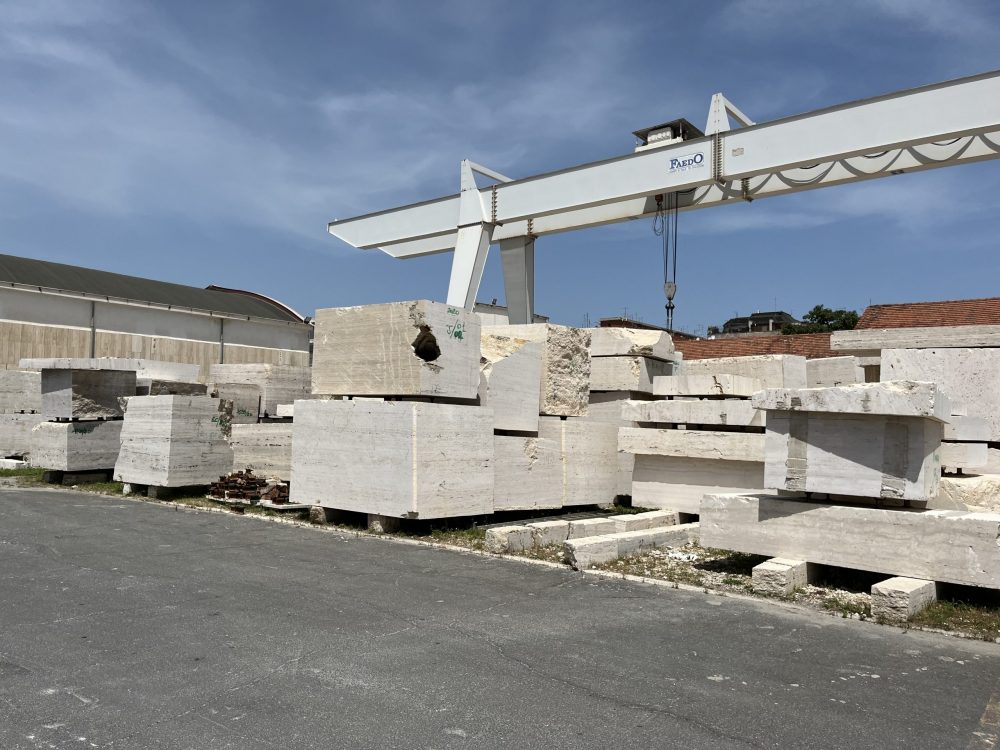
Oftentimes the stone buyers want specific styles of travertine for projects leading to the selection of blocks to be an important part of the process of cutting and finishing the stone.
The process begins with the large blocks being extracted from the earth at the quarries and then transported to travertine workshops. These blocks are very irregular and square blocks are required for the finishing. The wire saw machine, which is the first picture below, cuts the blocks into square pieces to allow the finishing machine, which is the second picture below, to cut them to the appropriate size.
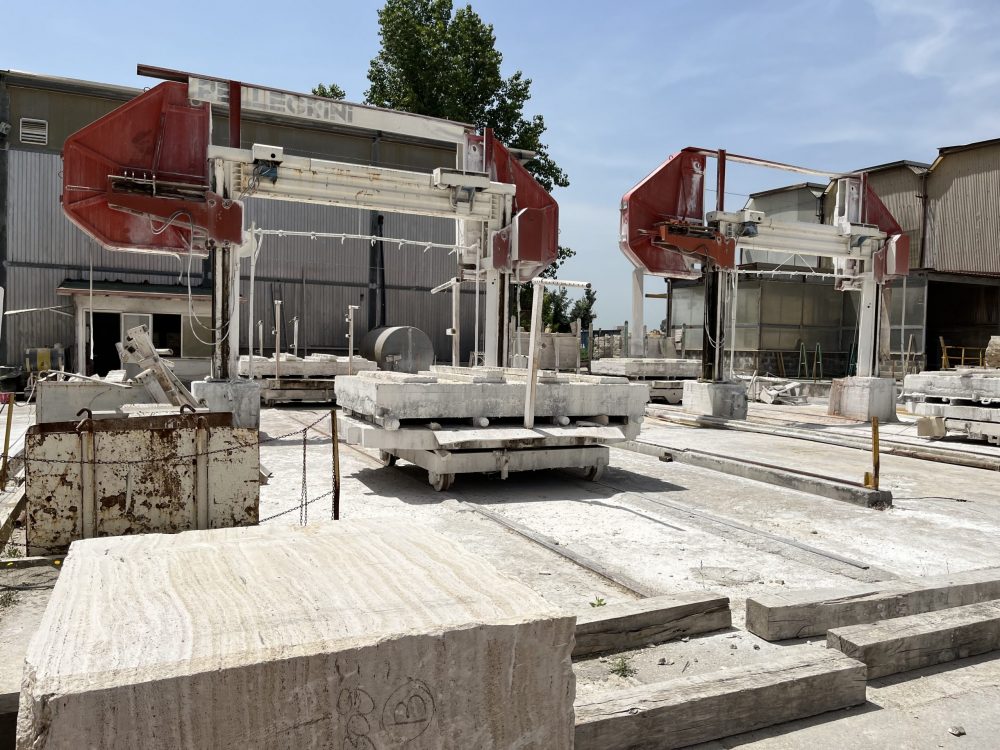
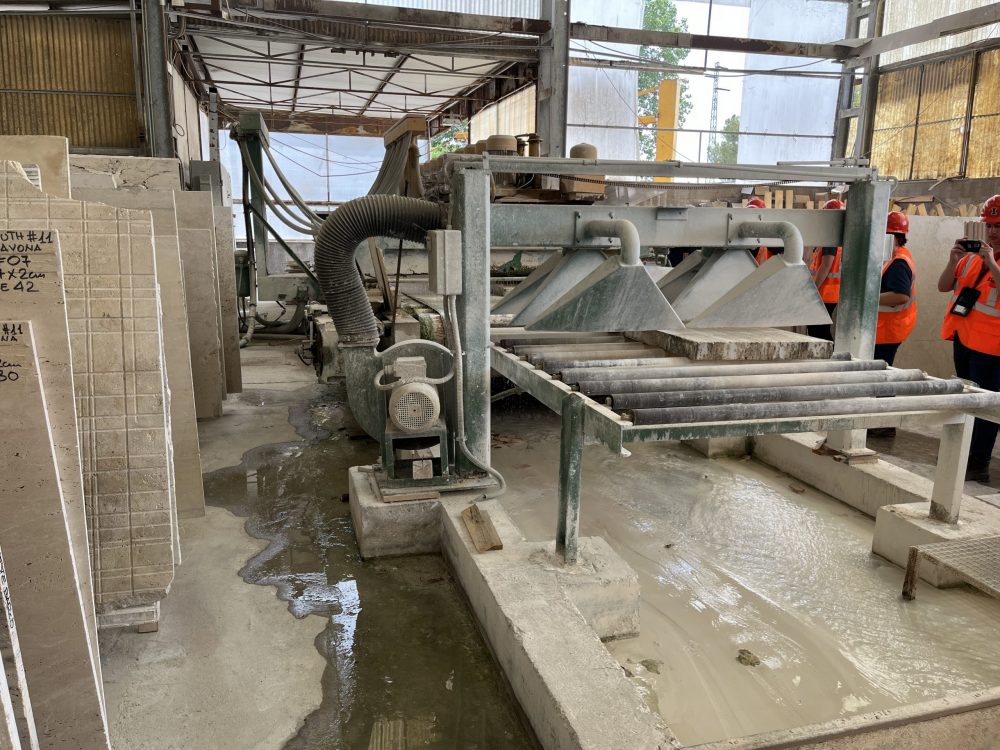
When the blocks are cut to extremely thin plates, they are prone to breaking. To overcome this, the thin plates are attached to corrugated aluminum sheets for application to walls. These plates can be seen below.

These smaller square blocks are then shaped using the bridge saw using a combination of a circular saw blade on a track and water. The machine uses synthetic diamond for the saws to cut travertine and is shown below. It’s a very soft stone but very resistant to weather. The smaller blocks are then ready for more detailed shaping and cutting.
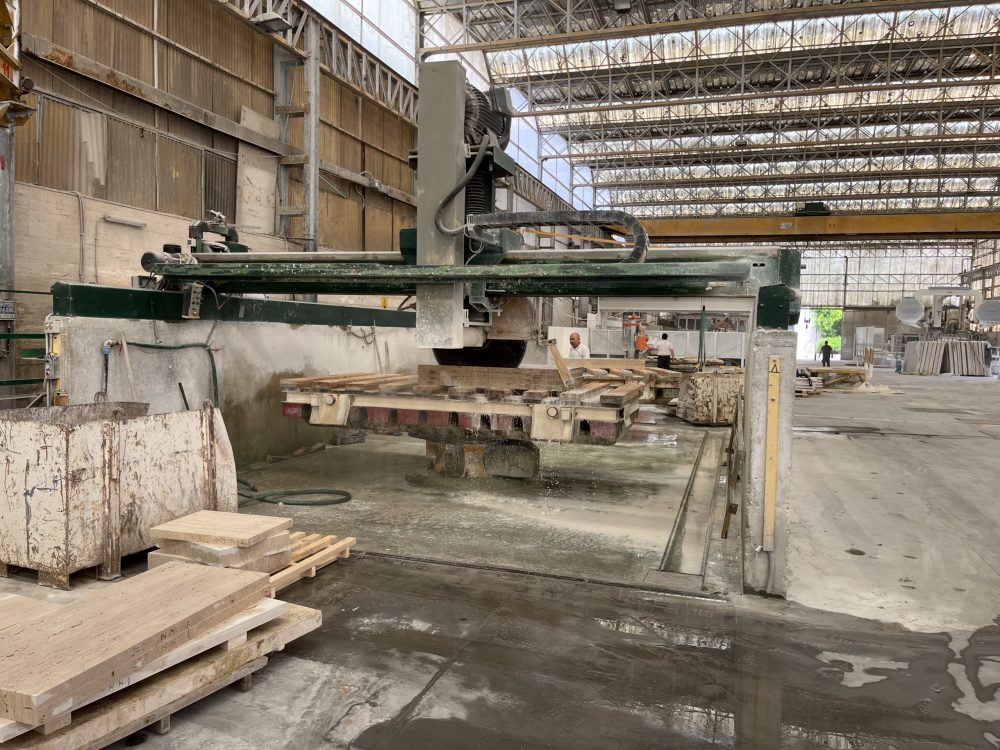
The angled saw is used for cutting the corners of the smaller blocks of stone so that they will fit together when installed. This allows for cleaner installation and a smoother appearance to the stone. Along with angled saws, CNC machines are used for the complex shaping of the stones. When curved edges or irregular cuts are needed, the CNC machines are programmed and used to cut the stones. The angled saw is the first picture below with the CNC machine as the second.
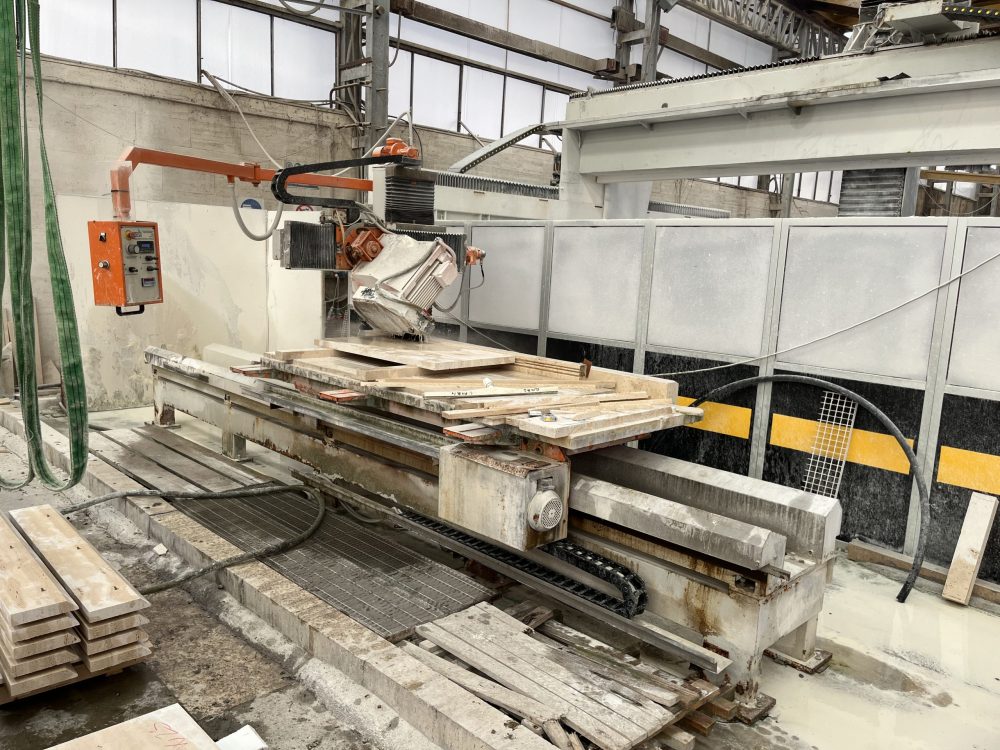

For the unique larger pieces, the Y machine, which is pictured first below, is used first then the five axis machine, which is shown second below, is used as it can create accurate cuts in any direction. Along with larger complex blocks, the five axis machine can be used for sculptures.
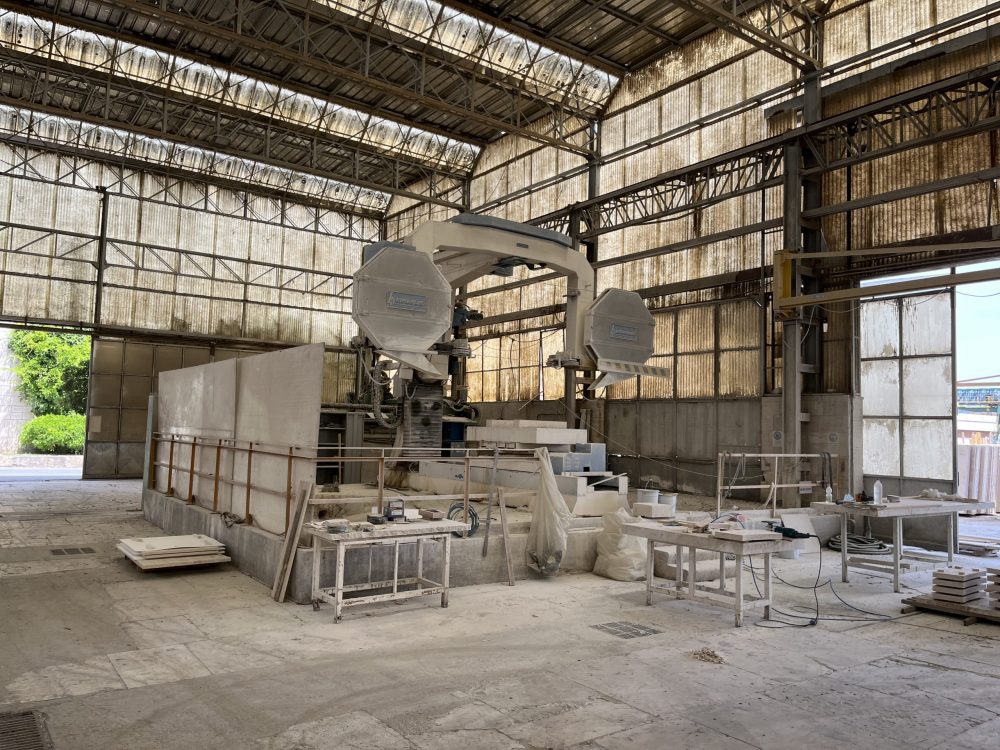
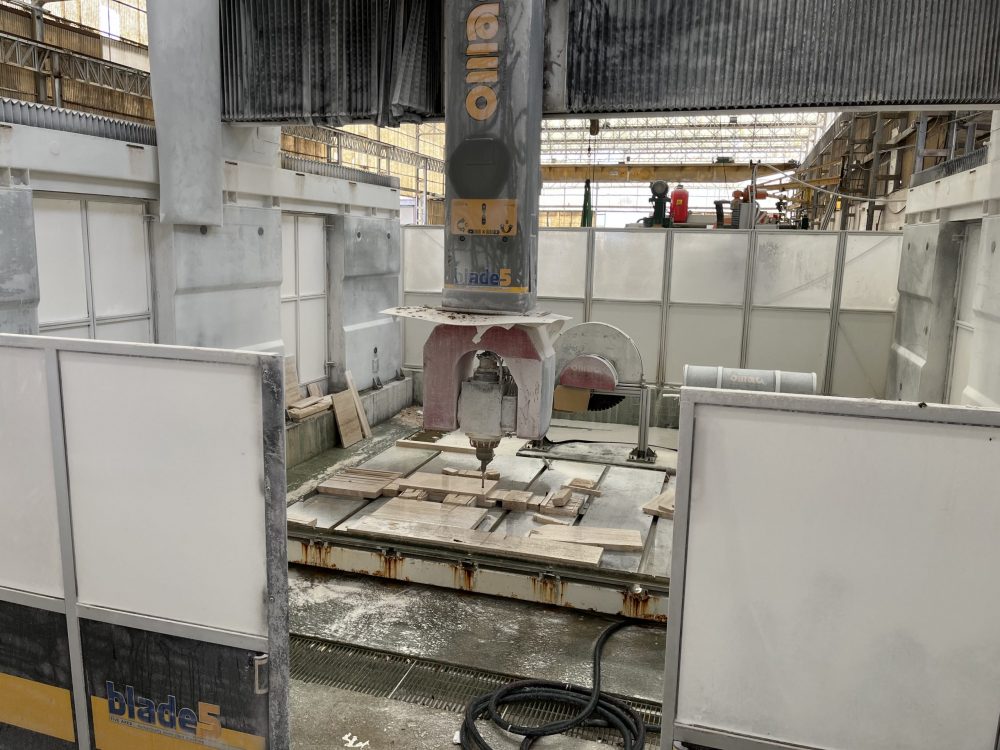
The machine shown below provides a very unique finishing to the stone. A rough finish that is very irregular. It is used specifically for the Getty Center project by Richard Meier, a renowned architect. The machine creates these rough cuts using a large weight that drops on the stone thus opening it along the vein. The cracking can only be done in one direction and the stone cannot be turned in another direction since it uses to natural vein of the stone to create the crack. Richard Meier used this specific technique for the Getty Center project because of the unique aesthetic of the rough finish and the possibility of fossils appearing in the stone.
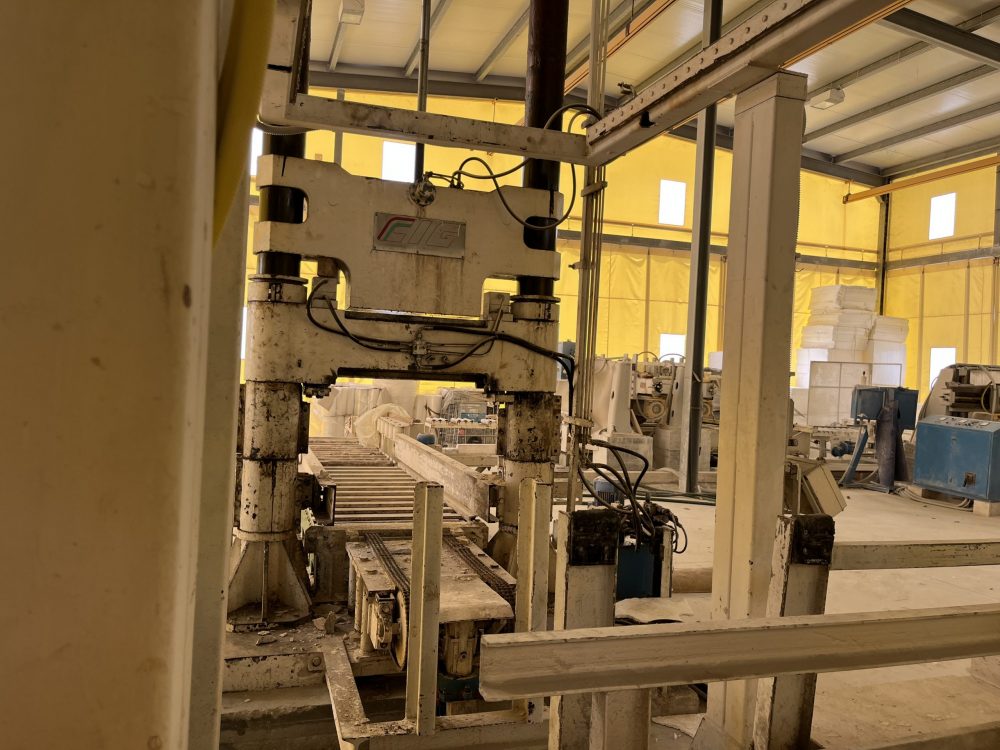
After all the different cutting and shaping of the travertine, the plates are filled using cement or epoxy to smooth out the natural holes and inconsistencies. The plates are then passed under the finishing machine to smooth it again after the filling is applied.
Outside of the warehouses with all the different machines, there were mock-ups for various projects present. These are used to show architects, stone buyers, and engineers how the stone could look when installed for a project. These mock-ups also show the anchoring systems for the stones which must be approved by the engineer. The anchoring systems for the tiles be cause the tiles to be as far as four feet away for the anchoring wall. Some of the mock-ups and anchoring systems can be seen below.
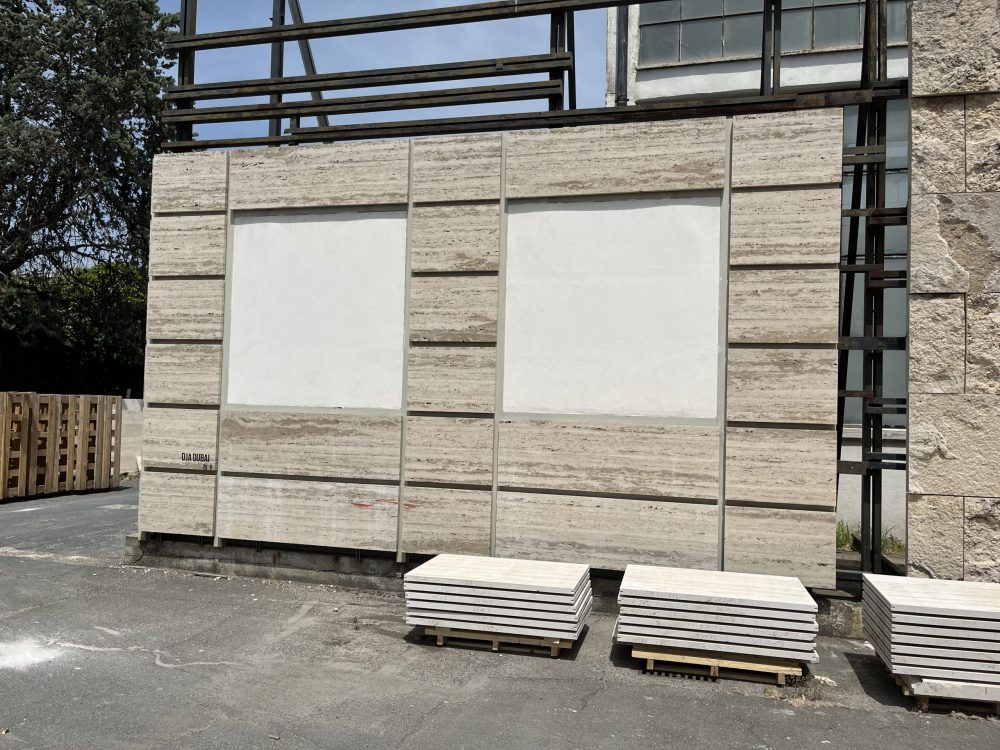
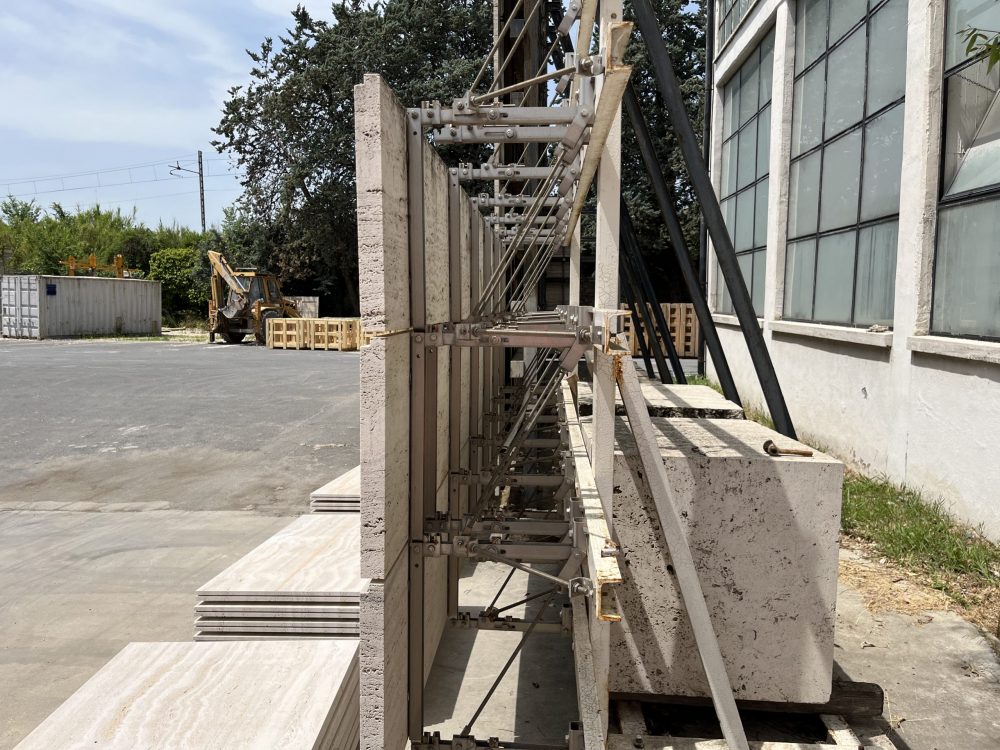
Overall, the travertine workshop was one of the most interesting and unique visits we experienced on this trip. We have all been on many construction sites, but for many of us, seeing a manufacturing plant like this was a first. You can bet that whenever we work with travertine on one of our own sites, we will remember this visit vividly.
Blog by Samuel Hoffmann
